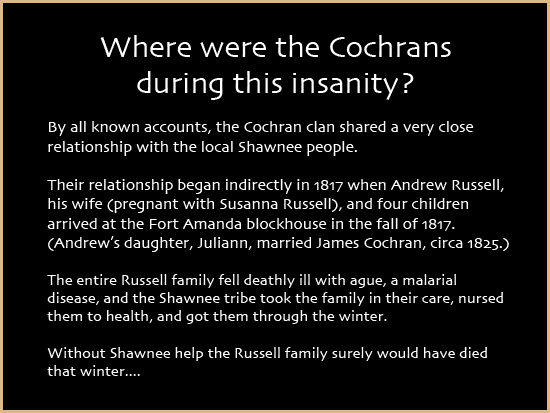| BIO Series Photo 1, 2, 3, 4, 5, 6, 7... Photo/design by Gary G. Ballard, San Diego |
 |
| Family Documentary:
To learn more about Fort Amanda, please go HEREculture.ohio.gov, and HEREohiohistory.org. Where were the Cochrans, my ancestors, during this genocidal insanity? By all known accounts, the Cochran clan shared a very close relationship with the local Shawnee people. This graphic is part of a 200-photo, 45-minute video documentary on one of the first white families to homestead northwest Ohio in the early 1800s, the Great Black Swamp, Defiance Trail, Auglaize River, Scott's Crossing, Lima, Elida, Delphos area. A 30-minute version of the documentary and more than 20 of the restored vintage 1800s 1900s historical photographs may be viewed HEREgballard.net The free on-line documentary also contains an in-depth 2002 interview of a 76-year-old elder woman which connects the Treaty of Greenville 1795, Indian Removal Act 1830, and Trail of Tears (late 1830s) to her family oral history. |
| Terms of Use • Privacy Statement • Site Map Kumeyaay Indians Home • About Us • Mission Statement • Press Kit • Contact Us |
